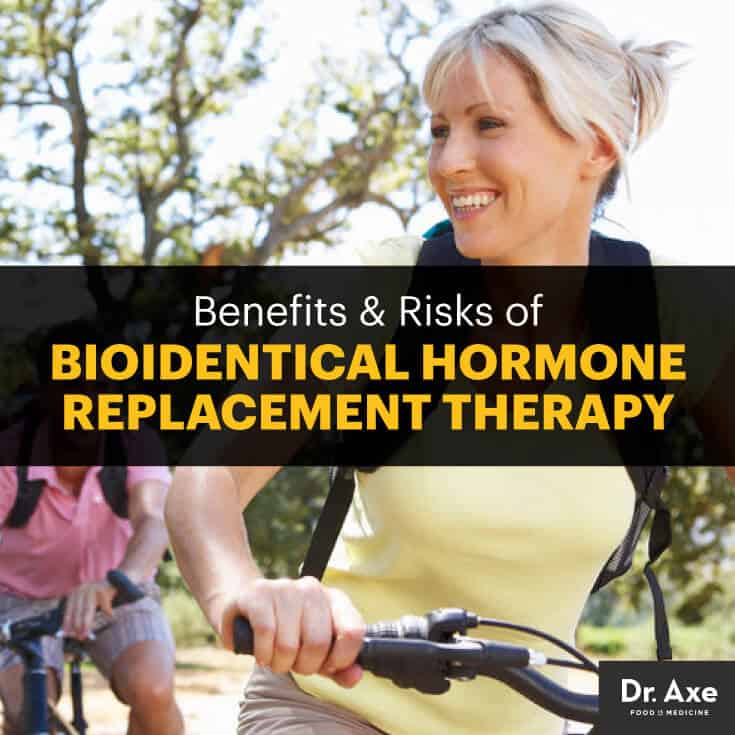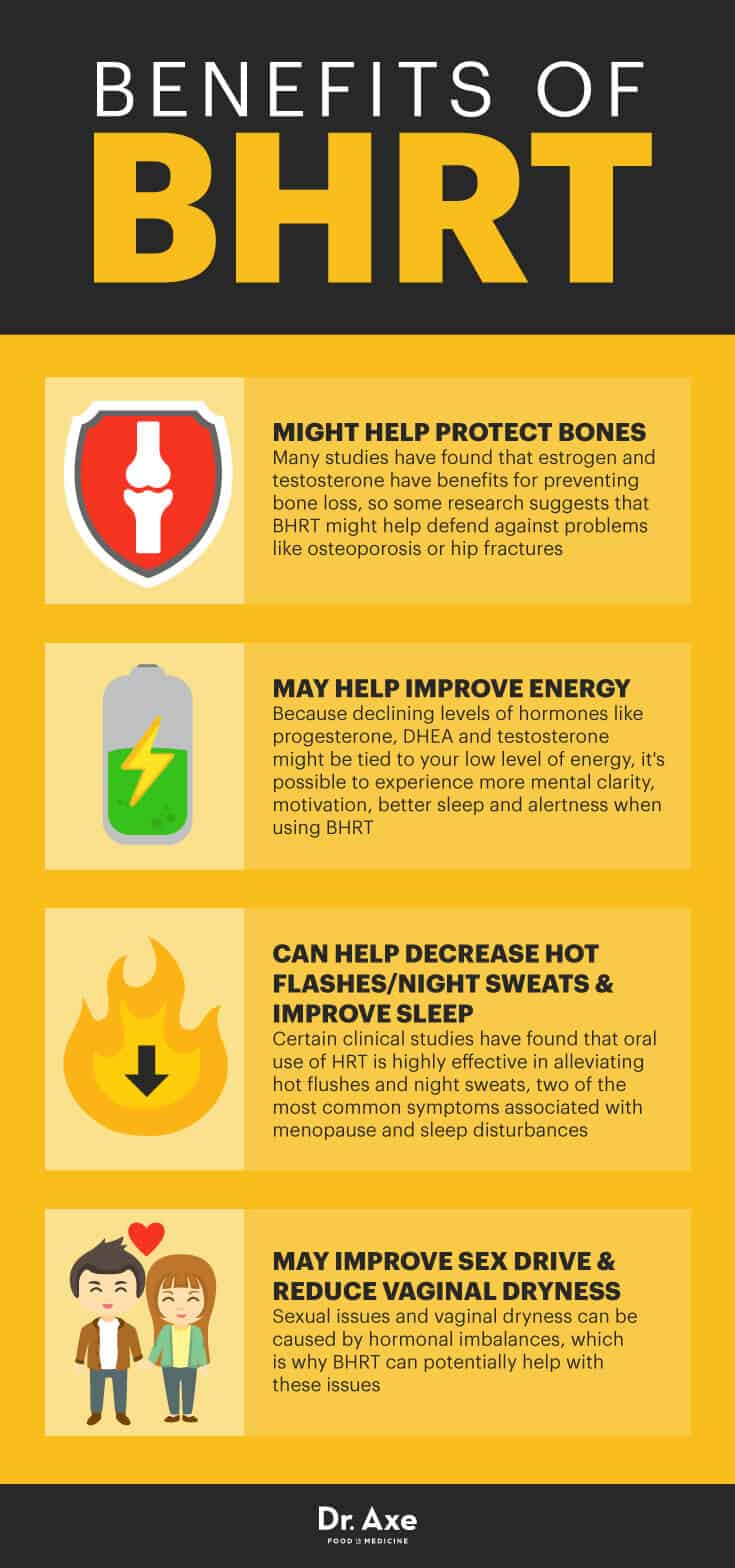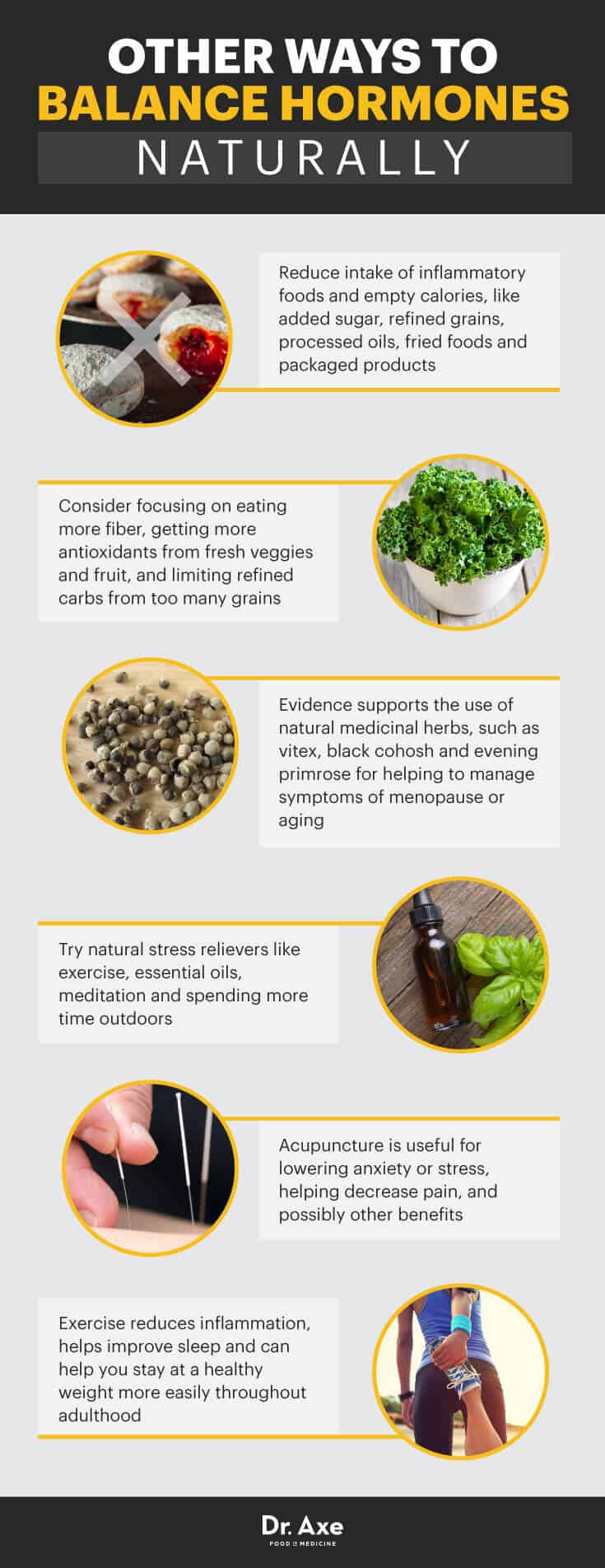This Dr. Axe content is medically reviewed or fact checked to ensure factually accurate information.
With strict editorial sourcing guidelines, we only link to academic research institutions, reputable media sites and, when research is available, medically peer-reviewed studies. Note that the numbers in parentheses (1, 2, etc.) are clickable links to these studies.
The information in our articles is NOT intended to replace a one-on-one relationship with a qualified health care professional and is not intended as medical advice.
This article is based on scientific evidence, written by experts and fact checked by our trained editorial staff. Note that the numbers in parentheses (1, 2, etc.) are clickable links to medically peer-reviewed studies.
Our team includes licensed nutritionists and dietitians, certified health education specialists, as well as certified strength and conditioning specialists, personal trainers and corrective exercise specialists. Our team aims to be not only thorough with its research, but also objective and unbiased.
The information in our articles is NOT intended to replace a one-on-one relationship with a qualified health care professional and is not intended as medical advice.
Benefits & Risks of Bioidentical Hormone Replacement Therapy
November 10, 2016

Hormone replacement therapy is now a widely available treatment option that’s growing in popularity among women over the age of 35 — specifically those who feel run-down, prone to weight gain (sometimes for the first time in their lives) and out of other options when it comes to managing symptoms of menopause. This includes options like bioidentical hormone replacement therapy (BHRT) to balance hormones and improve certain conditions.
The use of hormones to to help control symptoms like fatigue, bloating, low sex drive and thinning hair is very controversial. Some women swear by its beneficial effects, while others remain fearful of potential side effects. When it comes to the effectiveness and safety of bioidentical hormone replacement therapy, studies also show mixed results. The FDA states that it’s “concerned that BHRT claims mislead women and health care professionals, giving them a false sense of assurance about using potentially dangerous hormone products … ‘BHRT’ is a marketing term not recognized by the FDA, and the FDA is taking action against pharmacies that make false and misleading claims about BHRT drugs.” (1)
Here’s my opinion: While hormone therapy might be better than some other standard medical options, bioidentical hormone replacement therapy is not the ideal treatment approach either.
My advice is that in most cases BHRT is not completely necessary. In fact, lifestyle changes like exercising, using herbal supplements and improving your diet can help give you most (if not all) of the same benefits. That being said, when other approaches for overcoming menopause or age-related symptoms are exhausted and have not provided relief, hormone replacement might be beneficial for some women.
What Is Bioidentical Hormone Replacement Therapy?
Bioidentical hormone replacement therapy is the use of hormones to help resolve symptoms related to hormonal imbalance or decline in hormone production tied to aging. Certain hormone treatments are called “bioidentical” or sometimes “natural” because the types of hormones used are chemically identical (according to molecular studies) to those produced by the human body.
Specific hormones that BHRT aims to increase or balance include those tied to reproduction and youth, such as estrogen (in the form of estrone or estradiol), progesterone, and sometimes testosterone, dehydroepiandrosterone (DHEA) and adrenal hormones. (2) During the years leading up to menopause, and then through this transition, a woman’s body produces less of these hormones (especially estrogen), which may lead to symptoms like fatigue, hot flashes/night sweats, vaginal dryness and thinning bones. Various hormone therapy products are used to overcome these symptoms, some of which have been approved by the FDA and are available by prescription through health care providers, but many of which have not.
BHRT treatments include creams, lotions, injections, gels, sprats or tablets that have the goal of raising hormone levels back up to a more youthful state. Examples of popular bioidentical hormone replacement therapy products now on the market include Estrace, Premphase, Prempro, Activara and Vivelle-Dot, just to name a few (there are dozens and even more that are not “bioidentical”). (3)
Who Benefits from Bioidentical Hormone Replacement Therapy?
Wondering if this approach to managing symptoms associated with aging really works and if it’s necessary or even safe?
Hormone production increases during puberty and reaches a peak in healthy adults during their 20s and early 30s. Whether we like it or not, hormone levels then start to decline beginning around our mid-30s to early 40s and continue to remain at lower levels for the remainder of our lives. This drop in hormones is natural and unavoidable in many ways, but we can still help control how rapidly or smoothly this change happens and how we adapt to its effects.
BHRT might help some adults transition through these changes more easily, but this doesn’t mean that hormone treatments are always necessary or the best and only solution. Before we go further into the pros and cons of BHRT, let’s discuss who uses these treatments most often. What are some signs that your hormones are shifting and, therefore, that you might be a candidate for BHRT? These include:
- Menstrual cycles gradually ending (irregular periods can continue for several years)
- Thinning hair, on both your head and body (this occurs in most men and women, although usually more noticeably in men)
- Lowered sex drive and signs like vaginal dryness
- Often weight gain, especially around the stomach/abdomen
- Exhaustion and having less energy, for some even chronic fatigue along with muscle weakness
- Dryer skin
- For many, changes in body temperature and other common symptoms of perimenopause, including hot flashes or night sweats
- Sometimes trouble sleeping or symptoms of mood changes/emotional instability like irritability and anxiety
- Cognitive changes like brain fog, reduced concentration and trouble remembering
Part of the problem is that symptoms that are often attributed to aging or menopause, such as weight gain and fatigue, can actually begin in women before menopause takes place because they’re caused by other lifestyle factors. For example, it’s not common for women even in their 20s or mid-30s to already report having trouble sleeping, digestive issues or a lack of energy.
Things like nutrient deficiencies, a lack of sleep and high amounts of emotional stress can all disturb hormonal balance and raise inflammation well before menopause even takes place. Therefore I believe that if the root problems causing hormonal imbalances are properly addressed (poor diet, sedentary lifestyle, anxiety, etc.), then the unwanted symptoms should also dissolve, without the use of hormone therapy.
How can you know if your symptoms are related to hormonal changes or due to another health condition that should be treated first? Experts recommend considering how your health and reaction to lifestyle habits have changed over time as you’ve gotten older. For example, if you exercised and slept a certain amount during your 20s–30s and felt well, but during your late 40s suddenly you began feeling differently without changing your routine, then there’s a good chance that your symptoms are related to fluctuations in hormones like testosterone and estrogen.

Traditional Hormone Replacement Therapy vs. Bioidentical Hormone Replacement Therapy: What’s the Difference?
Although they do still need to be processed in some ways to make them effective for human use, “natural” hormones used in BHRT are derived from products like plants and animal sources, rather than being created synthetically in a lab like some products. (4)
Some health care providers who prescribe BHRT products perform saliva or blood tests in their patients first in order to assess their unique hormonal needs and then prescribe customized treatment solutions. This is called “custom-compounded” (custom-mixed) hormone therapy. Not all BHRT is customized, however. There are also FDA-approved hormone therapy products that are commercially available which are not specialized for each patient, and those that are not “naturally” produced.
The FDA has reported that, according to clinical studies, hormones that are marketed as bioidentical or natural don’t appear to be any more effective or safe compared to hormones used in traditional hormone therapy products. (5) Some research also shows that hormones that are marked as bioidentical might not be much different at all from those in traditional hormone replacement therapy and might even be riskier in some cases.
One of the biggest concerns associated with BHRT is regarding custom-mixed BHRT treatments, since not all mixtures meet FDA guidelines. With custom-compounded mixtures, when a doctor formulates a unique hormone treatment for a patient, the FDA does not have the chance to confirm that the active ingredients are used together in an effective manner or that they will be absorbed appropriately.
FDA-approved hormone therapy drugs undergo a lengthy process to meet federal standards for approval, but custom-compounded BHRT drugs usually don’t meet these standards. It’s possible for some BHRT mixes to contain other inactive ingredients that help bind pills, creams or lotions, which can cause side effects or allergies in some patients.
According to the American College of Obstetricians and Gynecologists, there’s also issues surrounding accuracy of testing when it comes to measuring patients’ hormone levels with saliva or blood tests. There is not strong scientific evidence that these tests are accurate given the fact that a woman’s hormones can vary throughout the day or vary substantially throughout a given month depending on things like her stress, sleep, activity, diet, etc. This makes it difficult to prescribe and prepare a custom-mixed BHRT solution that will work effectively. (6)
Benefits of Bioidentical Hormone Replacement Therapy
1. Might Help Protect Bones
Many studies have found that estrogen and testosterone have benefits for preventing bone loss, so some research suggests that BHRT might help defend against problems like osteoporosis or hip fractures. The Women’s Health Initiative study did demonstrate reduced hip fracture risk when estrogen and progesterone levels were restored — however, claims that BHRT can prevent bone loss or rebuild lost bones have not been proven. (7)
2. May Help Improve Energy (but Likely Won’t Help You Reach a Healthier Weight)
Because declining levels of hormones like progesterone, DHEA and testosterone might be tied to your low levels of energy, it’s possible to experience more mental clarity, motivation, better sleep and alertness when using BHRT. However, this likely won’t translate to a faster metabolism or easier weight loss.
According to a statement by the Cochrane Database of Systematic Reviews, “There is no evidence of an effect of oestrogen or combined oestrogen with progestogen on body weight and on the BMI increase normally experienced at the time of menopause.” (8)
3. Can Help Decrease Hot Flashes/Night Sweats and Improve Sleep
Certain clinical studies have found that oral use of HRT is highly effective in alleviating hot flashes and night sweats, two of the most common symptoms associated with menopause and sleep disturbances. One 2001 study that tested the effects of hormone replacement therapy (HRT) vs. a placebo in hot flash symptom frequency and severity found that HRT resulted in an average 77 percent reduction in symptom frequency, while placebo produced about a 50 percent reduction. HRT also lowered severity of symptoms and did not cause more side effects or withdrawal than placebo. (9)
4. May Improve Sex Drive and Reduce Vaginal Dryness
Up to 45 percent of menopause or postmenopausal women might be affected by vaginal atrophy, which causes symptoms like vaginal dryness, pain during sex, itching, irritation, burning and discharge. Hormone replacement drugs used for about one year or less are often prescribed to alleviate these symptoms.
The North American Menopause Society states that “first-line treatment for vaginal atrophy should include nonhormonal vaginal lubricants and moisturizers, as well as continued sexual activity.” But it also reports benefits of using HRT (such as vaginal creams, rings or tablets) for vaginal atrophy, which may include sustained relief of symptoms as well as physiological improvements thanks to increases in estrogen (such as decreased vaginal pH and increased blood flow, epithelial thickness, secretions). (10)
History and Facts About Bioidentical Hormone Replacement Therapy
The North American Menopause Society reports that about 1.4 million women now use BHRT treatments, which is around 40 percent of all prescriptions for hormone therapy in women who are menopausal or postmenopausal.
To date, no large, long-term study has been done to determine the adverse effects of bioidentical hormones, so safety concerns remain a serious issue. The Women’s Health Initiative, one large, long-term study that tested the effects of FDA-approved hormone replacement drugs, determined that side effects are possible in some patients and that these drugs have not been proven to prevent any diseases. (11) That being said, millions of women (and a much lower percentage of men too) have reported improvements from using hormone replacement drugs.
As described above, one concern with the use of BHRT is using a custom-mixed solution that has not been FDA-tested. According to the FDA, other concerns can include disguising/leaving untreated symptoms that are really caused by another illness (such as an autoimmune disorder or dietary intolerance) or potential side effects like raising the risk for blood clots, stroke, gallbladder disease, vision changes, skin changes, mood swings, and possibly heart disease or breast cancer. As of now, the FDA has also never approved any drug containing estriol, so keep in mind that benefits associated with products containing this hormone remain especially unknown.

Is BHRT Safe? Plus Other Treatments to Consider First
BHRT products have not been proven to be safe or unsafe. Because not enough is known about their long-term efficacy or safety, they’re still considered controversial. (12) Be aware of potential side effects, and know that claims stating BHRT is protective against cancer or heart disease in women has not been validated. (13) If you do decide to use them, do so using the lowest dose that helps and for the shortest time period needed to help reduce the chance for side effects.
How Else Can You Balance Hormones Naturally?
Before considering BHRT, I urge you to make lifestyle changes that are truly natural to see how you feel. Chances are your weight, sleep, mood and energy would greatly improve if you tried some of the following hormone-balancing solutions:
- Dietary changes: Reduce intake of inflammatory foods and empty calories, like added sugar, refined grains, processed oils, fried foods and packaged products. Consider focusing on eating more fiber, getting more antioxidants from fresh veggies and fruit, and limiting refined carbs from too many grains if weight loss is your goal.
- Natural herbs: Evidence supports the use of natural medicinal herbs, such as vitex, black cohosh and evening primrose, for helping manage symptoms of menopause or aging. These have been safely used in practices like Traditional Chinese Medicine or Ayurvedic Medicine for centuries, so they tend to pose much less risk for side effects compared to prescriptions.
- Stress management: Emotional stress can take a major toll on the body, lowering immunity and disturbing hormonal balance. Try natural stress relievers like exercise, essential oils, meditation and spending more time outdoors.
- Acupuncture: Useful for lowering anxiety or stress, it helps decrease pain and holds other benefits as well.
- Exercise: Exercise reduces inflammation, helps improve sleep and can help you stay at a healthy weight more easily throughout adulthood.
Final Thoughts on Bioidentical Hormone Replacement Therapy
- Bioidentical hormone replacement therapy is the use of hormones to help resolve symptoms related to aging or menopause. Bioidentical hormones are considered more natural compared to standard HRT because the hormones are chemically identical to those produced by the human body.
- People who turn to BHRT use this treatment for reducing symptoms like hot flashes/night sweats, fatigue or weakness, trouble sleeping, vaginal dryness, and lowered sex drive. BHRT has not been shown to help prevent weight gain associated with aging and has not been proven to lower risks associated with any chronic diseases.
- BHRT poses potential risks, including short-term side effects like indigestion or mood swings, along with possible heightened risk for conditions like cancer or stroke.
- Before trying hormone replacement therapy, I recommend a natural approach to balancing hormones, including improving your diet, exercising, using natural herbs, decreasing allergies or deficiencies, and reducing stress.










